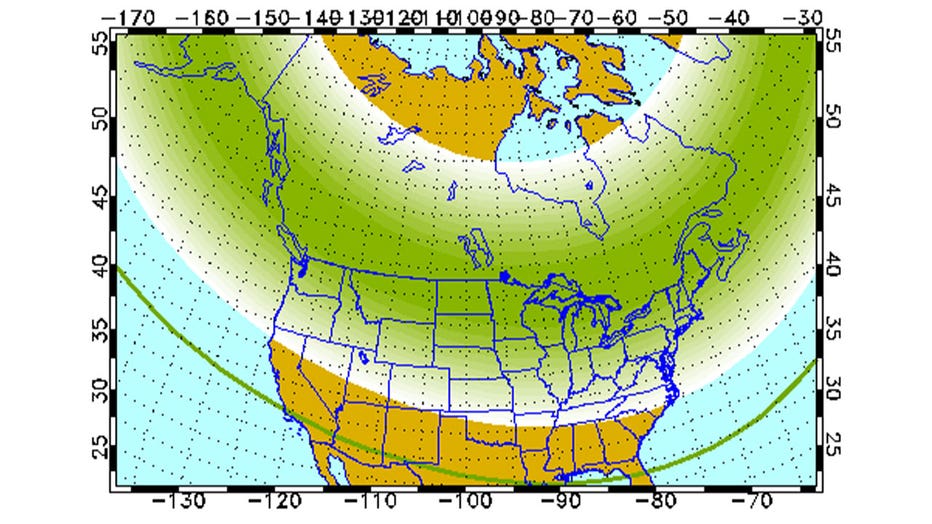Northern lights could be visible in California due to severe solar storm

Solar storm expected to hit Earth
A massive solar storm is expected to hit Earth, possibly impacting our communication grids.
A severe solar storm could make the Northern Lights visible across a majority of the U.S., but will the spectacular display be visible in California?
According to the National Oceanic and Atmospheric Administration, it's possible! The NOAA said the latest storm could produce northern lights as far south in the U.S. as Alabama and Northern California. The University of Alaska Fairbanks aurora forecast shows the chance of seeing the Northern Lights increase on Friday, May 10, stretching down into the northernmost states. On Saturday, May 11, high aurora activity stretches even further south, and weather permitting, they may be visible low on the horizon as far south as Southern California, represented by the solid green line in the graphic below.

Auroral activity will be high(+++) on Saturday. Weather permitting, highly active auroral displays will be visible overhead from Inuvik, Yellowknife, Rankin and Iqaluit, to Carson City, Oklahoma City, Little Rock and Raleigh, and visible low on the h
The National Oceanic and Atmospheric Administration issued a rare geomagnetic storm watch — the first in nearly 20 years. That was expected to become a warning Friday night, when the effects of the solar outburst were due to reach Earth.
RELATED: Solar flare could disrupt communications, produce northern lights
NOAA said the sun produced strong solar flares beginning Wednesday, resulting in five outbursts of plasma capable of disrupting satellites in orbit and power grids here on Earth. Each eruption — known as a coronal mass ejection — can contain billions of tons of plasma and magnetic field from the sun’s outer atmosphere, or corona.

NOAA’s GOES-16 satellite captured the eruption from the sun that occurred around 2 p.m. EDT on May 9, 2024. Credit: NOAA
The flares seem to be associated with a sunspot that’s 16 times the diameter of Earth, according to NOAA. An extreme geomagnetic storm in 2003 took out power in Sweden and damaged power transformers in South Africa.
What is a geomagnetic storm?
For most people, a Geomagnetic Storm Watch is not something to be concerned about. The watches help government agencies, power providers, telecommunication companies and satellite operators prepare to protect systems impacted by space weather.
Geomagnetic storms can produce stronger aurora borealis lights or Northern Lights, which normally occur at the poles, but space weather can cause the lights to expand into the northern edge of the U.S.

The Aurora Borealis appears in the sky on January 8, 2017 near Ester Dome mountain about 10 miles west of Fairbanks, Alaska. The Aurora Borealis is a result of the interaction between solar wind and the earth's magnetosphere. (Photo by Lance King/Get
Geomagnetic storms could become more frequent over the next year as the sun begins to move into the solar maximum phase of its 11-year cycle.
A solar cycle is a sequence the sun’s magnetic field goes through every 11 years, where the field flips.
FOX 13 Seattle, FOX Weather, and the Associated Press contributed to this report.

